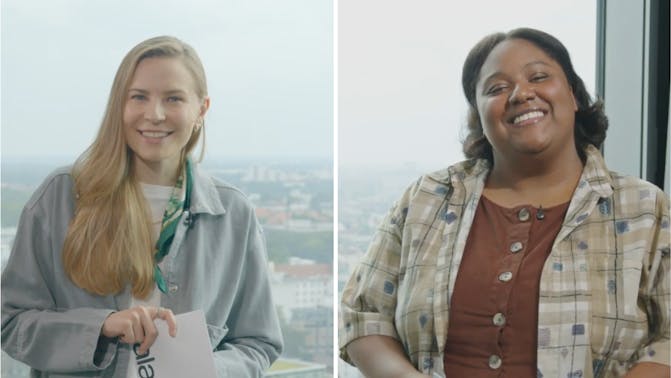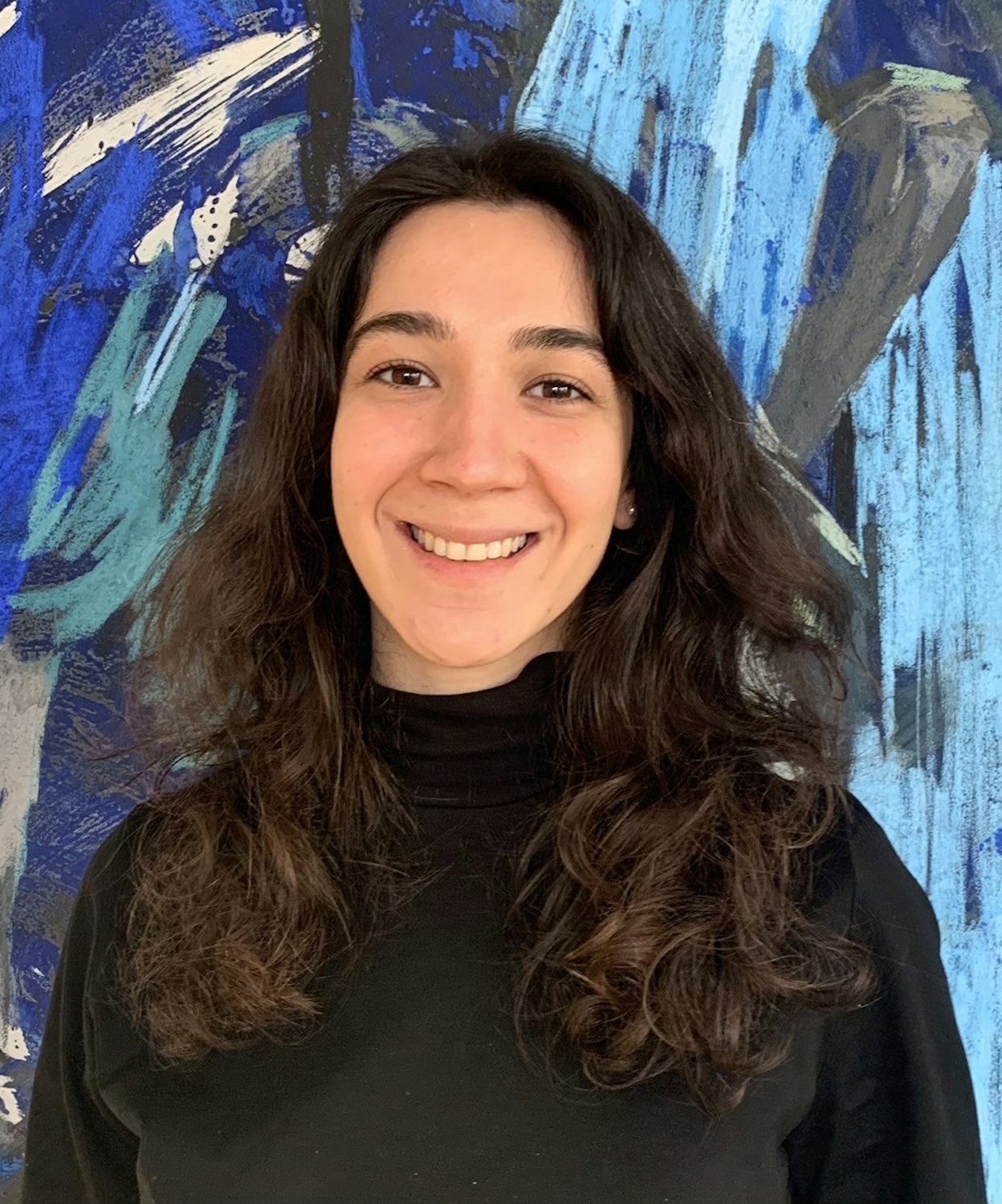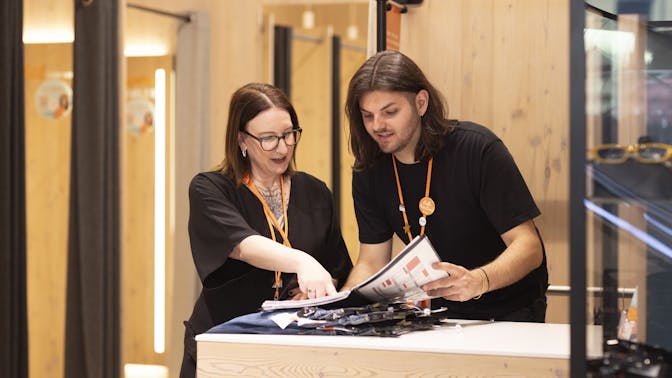
Pioneering Personalization at Zalando: Insights from Şeyda Ülgen
Şeyda Ülgen is Principal Product Designer in the Personalization Recommendation, Search, and Browse (PRSB) team. Following her recent talk at the Global Women In Tech Conference, she shares details on how Zalando goes from concept to implementation in product design, and the importance of collaboration for solving problems that matter.
5 min
18 June 2024

My journey over the past decade has taken me to vibrant cities like Berlin, Amsterdam, and Istanbul. About five years ago, I found my home in Berlin, and I’ve loved it ever since.
I'm currently a part of Zalando as a Principal Product Designer in the Personalization Recommendation, Search, and Browse (PRSB) team. This means that I work at the ever-evolving intersection of AI and design to tailor experiences to individual customer needs.
My role involves navigating ambiguity and leading design efforts in technically complex areas, a challenge I relish every day. Additionally, I have the privilege of enabling and empowering other designers across our teams, ensuring we deliver human-centred and innovative solutions that drive growth and engagement.
Because I’ve had the privilege of leading transformative projects at Zalando, I embraced the chance to present at this year’s Women in Tech (WIT) conference. Sharing my team’s experience and learnings at the conference was rooted in a desire to inspire other women in tech around the topic of the transformative potential of AI.
Presenting at the Women In Tech Conference
At the WIT Conference, I had the opportunity to share our journey and the principles guiding us in designing human-centred generative AI-powered products. The four key principles I highlighted were:
1. Solve Problems that Matter
2. Shift the Paradigm
3. Manage Expectations
4. Fail Gracefully
I reflected on our experience building the Zalando Assistant and shared learnings that helped us identify these guiding principles.
From Concept to Implementation in Six Weeks
I am part of the Zalando Assistant project team, whose goal was to help Zalando customers navigate our assortment with a generative AI-powered assistant, similar to a shop assistant at a physical store would do. Bringing the project from concept to implementation in just six weeks required a highly collaborative and resilient team, strong leadership, and a unified sense of purpose. We were eager to test our ideas and learn from them quickly.
Our approach to design was rooted in co-creation within the PRSB team. We iterated together, we decided on trade-offs together, and we developed a simple version of the assistant first. We then tested this version with a small group of customers from our research pool. This allowed us to gather feedback, interview customers, and refine the experience before launching it to a broader audience.
Solving Problems that Matter
Our commitment to solving problems that matter is deeply embedded in Zalando's Founding Mindset (OFM). Customer insights revealed that our vast assortment, while advantageous, can be overwhelming for customers trying to find exactly what they need.
Some customers visit Zalando with specific activities, occasions, or events in mind, and we were lacking options to guide them through their individual journey. Addressing this long-standing problem was crucial and we knew it was worth solving. We engaged with our customers throughout the project, continuously learning from their feedback and refining the assistant to meet their needs better.
Co-Creating with Our Customers
From the outset, we co-created the assistant with our customers, gathering feedback through surveys and in-depth interviews. This iterative process helped us understand customer behaviour and preferences, allowing us to fine-tune the assistant based on real user needs and desires.
By identifying patterns in the feedback and understanding the underlying reasons for customer behaviours, me and the team could shape our roadmap and ensure our solutions were genuinely valuable to our customers.
Learning at Scale and Failing Gracefully
In my presentation, the final point I discussed was that working with large language models means anticipating and managing potential failures. For the Zalando Assistant, this could be anything from misinterpretations and forgotten context to hallucinations or irrelevant item suggestions. While failure is inevitable, our focus is always on learning and taking action.
For this reason, we developed an internal tool to monitor performance at scale, quantify issues, and understand customer intentions. This AI tool has been instrumental in maintaining quality and it allows us to intervene as needed, ensuring a baseline of quality and a human-team-in-the-loop approach to continuously improve the Zalando Assistant and, as a result, the customer experience.
The Zalando Journey towards Customer-Centricity
Our journey at Zalando is a testament to the power of collaboration, customer-centricity, and continuous learning. By embracing these values, we strive to create innovative solutions that not only meet but exceed our customers' expectations, today and in the future.
To achieve this, our PRSB team is dedicated to groundbreaking projects with a broad impact on the customer experience in e-commerce.
The Role of the PRSB Team at Zalando
The PRSB team at Zalando is dedicated to delivering a ‘tailored discovery experience’ for our customers, ensuring that Zalando remains the top destination for fashion discovery and inspiration for around 50 million active customers.
What sets our team apart is our maturity in understanding and utilising artificial intelligence for rapid innovation. This expertise allows us to stay ahead of the curve and continuously enhance our customer experience.
Collaboration Across Teams
Working on the Zalando Assistant project felt like being part of a small, dynamic start-up from the get-go. Our team fostered strong collaboration and quickly developed hypotheses to test and learn from.
Initially, we operated autonomously to learn rapidly and move fast. We gathered our insights from a controlled test panel. As a next step, we began collaborating with other teams across Zalando to broaden our reach. For instance, we facilitated workshops and included team members from the AI Safety team to identify, detect, and eliminate risks. Our ongoing collaboration with colleagues like Kasra Hosseini, an applied scientist at Zalando, has even led to us presenting our work at conferences, showcasing the strength of our teamwork.
The strength of teamwork and collaboration has not only propelled the Zalando Assistant project forward but has also given me the opportunity to present my team’s work at WIT, further solidifying our commitment to collaboration and innovation.

